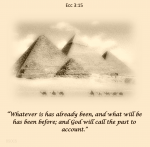.
Back when Jesus was living in Israel; days consisted of no more than 12
hours apiece and nighttime and daytime had their own hours; viz: days were
when the sun was up and nights were when the sun was down.
• John 11:9-10 . . Are there not twelve hours in the day? If anyone walks in
the day, he does not stumble, because he sees the light of this world. But if
anyone walks in the night, he stumbles, because the light is not in him.
Days divided into twelve equal periods of sunlight were regulated by what's
known as temporal hours; which vary in length in accordance with the time
of year. There are times of the year at Jerusalem's latitude when this world's
light consists of less than 12 normal hours of sun, and sometimes more; but
when Jesus was here; the official number of hours was always twelve
regardless.
I don't exactly know why the Jews of that era divided their days into twelve
equal periods of sunlight regardless of the seasons, but I suspect it was just
a convenient way to operate the government and conduct civil affairs;
including the Temple's activities (e.g. the daily morning and evening
sacrifices)
Anyway: I suggest that when attempting a chronology of the three days and
three nights predicted by Matt 12:40 that temporal hours be utilized because
that's how days and nights were understood back in Jesus' day.
For example: were Jesus to be crucified on Friday, the 15th of April 2022,
his first night in the tomb would begin at sunset that day, viz; Jesus first
night in the tomb would be Friday night, his second night would be
Saturday night, and his third night in the tomb would be Monday night.
_


